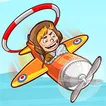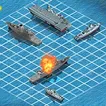





































Flight Simulator Games: Navigating the Evolution and Realism in Digital Skies
The journey of flight simulator games is a testament to the relentless pursuit of realism and immersion in the digital realm. From their rudimentary origins, where simple wire-frame models and basic physics ruled the skies, to the present day’s near-photorealistic landscapes and sophisticated aerodynamics, these games have soared beyond mere entertainment to become marvels of technology.
With each generational leap in computing power, flight simulators have seen exponential improvements in graphics and physics engines. The early pixelated horizons have given way to vast, detailed worlds, where every cloud, mountain, and city feels alive. The physics, once governed by a handful of parameters, now simulate the intricate dance between aircraft and atmosphere with astonishing precision.
The evolution of flight simulators is not just a visual or technical feat; it’s an experiential one. The tactile feedback of a joystick, the hum of engines, and the dynamic weather systems all contribute to an experience that can feel as real as the forces of lift and drag that keep an aircraft aloft. This realism extends beyond the cockpit, with simulated air traffic, radio communications, and a living world that reacts to the player’s actions.
As these simulations have become more advanced, they’ve also become more accessible. What was once the domain of a niche audience with specialized knowledge has opened up to a broader spectrum of enthusiasts and casual gamers. This democratization of flight simulation has allowed countless individuals to virtually take to the skies, exploring the wonders of flight without leaving the ground.
The evolution of flight simulator games is a journey that mirrors the human fascination with flight. As we continue to push the boundaries of technology, these digital skies beckon with the promise of limitless exploration and the enduring dream of soaring among the clouds.
Google Aircraft Simulator and the Rise of Accessible Flight Simulations
The advent of accessible flight simulations has revolutionized the way we engage with the art of flying, making the pilot’s seat available to anyone with a computer or device. These platforms have simplified the complex mechanics of flight into user-friendly interfaces, boasting intuitive controls that invite users from all walks of life to experience the thrill of aviation.
Balancing complexity with accessibility, these simulators serve as a bridge between the casual gamer and the aviation enthusiast. They offer a spectrum of experiences, from the serene to the challenging, catering to a diverse audience with varying levels of interest and expertise. The ease of access has not only entertained but also educated, as these simulations find their way into classrooms and educational programs.
The integration of flight simulations into educational settings has been particularly impactful. They provide a practical and engaging method for students to grasp the fundamentals of aerodynamics, navigation, and meteorology. By simulating real-world scenarios, learners can experiment and understand the principles of flight in a risk-free environment, enhancing STEM education and potentially inspiring the next generation of pilots and aerospace engineers.
Moreover, the rise of accessible flight simulations has fostered a sense of community among users. Online platforms enable pilots to share the virtual skies, participate in global events, and exchange knowledge. This communal aspect has turned solitary flights into shared experiences, where enthusiasts can connect, collaborate, and grow their passion for aviation together.
In essence, the rise of accessible flight simulations has not only democratized the experience of flying but has also expanded its potential as a tool for education and community building, bringing the joy and knowledge of aviation to a broader audience than ever before.
Airplane Simulator Games: Educational Tools and Community Experiences
Airplane simulator games have transcended the realm of mere entertainment, carving out a significant niche as educational tools. They offer an interactive platform where the principles of flight and aircraft operation can be taught and understood in a dynamic and engaging way. In professional pilot training, these simulators are indispensable, providing a safe and controlled environment for trainees to hone their skills, understand complex procedures, and navigate challenging scenarios without the risks associated with real-life training.
In academic settings, these games have become a cornerstone of STEM education, enabling students to apply mathematical and scientific concepts in practical, hands-on experiences. The immersive nature of flight simulation allows learners to witness the immediate effects of their decisions and calculations, fostering a deeper understanding of subjects like physics, geometry, and computer science.
Beyond their educational value, airplane simulator games have given rise to vibrant communities. These digital arenas are where enthusiasts from around the globe converge, sharing their passion for aviation and learning from one another. Multiplayer functionalities allow users to engage in cooperative or competitive flying, participate in virtual airshows, or simply explore the skies together. Online forums and events further enhance this sense of community, offering spaces for discussion, the exchange of tips and techniques, and the formation of lasting friendships.
These communities also act as incubators for continuous learning. Experienced pilots and novices alike can benefit from the collective knowledge, with veterans often guiding newcomers through the nuances of flight. This collaborative environment not only enriches the individual’s experience but also contributes to the collective growth of knowledge within the community, ensuring that the fascination with flight simulation continues to thrive and evolve.
The Future of Flight Simulation: Technological Advancements and Trends
As we look to the horizon, the future of flight simulation is poised to reach new heights with emerging technologies paving the way. Virtual reality (VR) is set to redefine the immersive experience, placing users directly into the cockpit with a 360-degree view of their surroundings. This leap forward promises to enhance the sensation of flight, making the line between simulation and reality ever more indistinct.
Artificial intelligence (AI) is another frontier, with advancements leading to more dynamic and responsive air traffic, creating a bustling airspace that mirrors the complexity of real-world aviation. AI-driven weather systems are anticipated to introduce unpredictable and challenging conditions, requiring pilots to adapt and make strategic decisions in real-time.
The integration of real-world data is expected to bring unparalleled authenticity to simulations. Live weather updates, air traffic, and even global events could be streamed directly into the virtual environment, providing a constantly evolving backdrop for pilots to navigate.
Hardware developments, too, will continue to enhance the tactile feedback and control precision available to users. From high-fidelity flight sticks to motion seats, the physical interface between pilot and machine is set to become more sophisticated, offering a deeper level of control and realism.
As we advance, the community aspect of flight simulation will likely grow in significance. Shared virtual spaces could become more prevalent, allowing for collaborative and educational opportunities that transcend geographical boundaries. The potential for user-generated content and modding will further personalize and expand the simulation experience.
In summary, the future of flight simulation is bright, with technological advancements and trends shaping an increasingly authentic and connected aviation experience. The sky is not the limit; it is the playground for the next generation of virtual pilots and aviation enthusiasts.